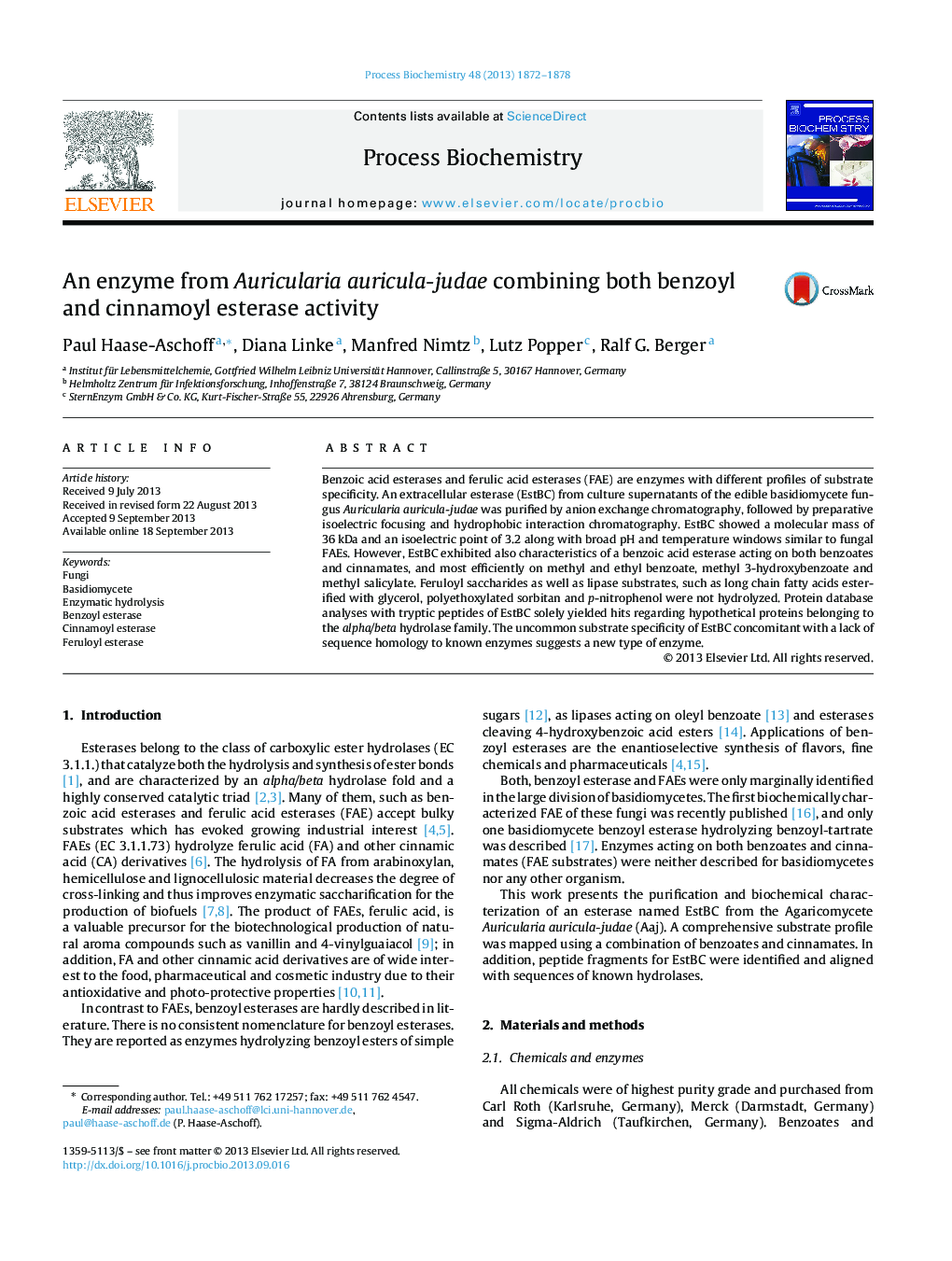| Article ID | Journal | Published Year | Pages | File Type |
|---|---|---|---|---|
| 34415 | Process Biochemistry | 2013 | 7 Pages |
•EstBC from Auricularia auricula-judae established a new class of esterases.•The unique substrate profile and partial sequences were determined.•EstBC acted on both, benzoates and cinnamates efficiently.•The enzyme may be useful for hydrolyzing/synthesizing flavor esters or other fine chemicals.
Benzoic acid esterases and ferulic acid esterases (FAE) are enzymes with different profiles of substrate specificity. An extracellular esterase (EstBC) from culture supernatants of the edible basidiomycete fungus Auricularia auricula-judae was purified by anion exchange chromatography, followed by preparative isoelectric focusing and hydrophobic interaction chromatography. EstBC showed a molecular mass of 36 kDa and an isoelectric point of 3.2 along with broad pH and temperature windows similar to fungal FAEs. However, EstBC exhibited also characteristics of a benzoic acid esterase acting on both benzoates and cinnamates, and most efficiently on methyl and ethyl benzoate, methyl 3-hydroxybenzoate and methyl salicylate. Feruloyl saccharides as well as lipase substrates, such as long chain fatty acids esterified with glycerol, polyethoxylated sorbitan and p-nitrophenol were not hydrolyzed. Protein database analyses with tryptic peptides of EstBC solely yielded hits regarding hypothetical proteins belonging to the alpha/beta hydrolase family. The uncommon substrate specificity of EstBC concomitant with a lack of sequence homology to known enzymes suggests a new type of enzyme.
